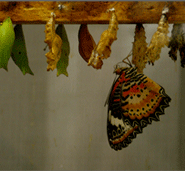It was somewhere between Wordsworth and Enid Blyton. My tea garden childhood in Assam. When every winter vacation meant a long drive from the cloud-drenched hills of Shillong to the hushed, glimmering plains below. Those were days of long nothing, when the earth was close, and grass stained my skin, and the world outside was a playground of infinite possibilities. I was ruthless pirate and gentle gardener, dutiful doll-house keeper and medieval warrior wielding a cardboard sword. My friends were a giant gulmohar and a creaky, lonely swing. Sometimes, I watched white butterflies flutter across the lawn because time stretched before me as limitless and vast as golden paddy fields. Then Childhood wanders away, into deep, dark Blakean woods and emerges fully grown and tired and troubled.
Sometimes, though, it may be recalled, coaxed out like a frightened sparrow.
Of all the artworks that have moved, startled, shocked, and delighted me, Baptist Coelho’s “Finally Found My Room Full of Toys” wrenched me back to childhood. It was part of a series of site specific installations, born out of the desire to challenge the conventional notion of a gallery as a neutral, unbiased ‘white cube.’ The artists had a free rein – creating chambers within chambers, distorting the way a viewer normally negotiates a formal space. Coelho chose the smallest room in the gallery. It was a space that was immediately intimate, removed from the others, solitary like a child who prefers to play on his or her own. It was a quiet, dimly-lit room, with bare, creamy walls and a single bulb suspended from the ceiling. What caught your eye were the white paper planes that covered almost every inch of the polished wooden floor.
They lay there – a thousand or more carefully folded dreams at rest.
They were white so you might fill them with colour.
The artist explained how, for him, as a child, factory-made toys remained mostly inaccessible and his world was made up of simple, handmade playthings. It was their bare simplicity that fuelled his imagination. “Finally Found…” served as a delicate recollection of childhood innocence and creativity. It recalls a past, surprisingly not so distant, when television and computer screens didn’t fill in hours spent playing outside. It also recalls a time when consumerism hadn’t permeated our lives – when kids chose kites instead of cell phones, and wielded cardboard swords instead of “real,” virtual guns.
The paper planes, stark in their textbook paper whiteness, were messengers of the past as well as soldiers of resilience.
The act, to begin with, is childlike. The artist folding paper, revelling in the feel of parchment, of sudden, invisible cuts, of seeing a shape created out of the mundane square of a page. In their clear, simple lines they displayed the beauty of precision and dedication, of being able to create with your own hands. It was about seeing with your mind – that this is how it might look before it even exists. As a child though, a paper airplane is created and then set free, to end in a puddle or to vanish into the trees. Here, the process ends with deliberation, a concerted effort to arrange and, even in their disorder, to fill the space in a loose centrifugal formation. In a way, their ‘imprisonment,’ within this form and the room, is a reminder of how our imagination is held captive, locked within the four walls of modernity and age.
In the room was a looped audio clip playing the sound of wind interspersed with the tinkle of a music box. This was the music to which these paper planes might take flight. The music to which, spent from playing outside, a child might fall asleep.
If you stood in the middle, the paper airplanes lay in heaps, pointing towards you, almost accusingly, threatening, daring you to overlook them – as though to not notice would be to deny yourself the ability to be a child again. Even though the paper planes were planted on the floor, motionless, unable to move, there was a sense of infinite lightness, of the defiance of gravity. In your mind they fly, and they turn into birds and boats and dragons and other wistful, wondrous things.
Janice Pariat is a writer from Shillong, currently living in London.
Baptist Coelho was born in 1977, and is from Mumbai, currently on residency in London.
Editor's Note.
I was about 9 years old—a 3x3 cube—and my school had a class, an hour a week, called 'Value Education'. Our teacher gave us an A4 sheet of paper, split into 12 boxes. Each box had a patternless constellation of dots. Our task was simply to create a square, a rectangle or a triangle within each box, without leaving a single dot astray.
While I connected the dots into stars and baby elephants with stubbed noses and large antennae, my peers were coerced—I say coerced because it was a time when lines did not come naturally to us, when we didn't feel obliged to color inside trees and they didn't need to be green—into following the structure.
Read MoreWhile I connected the dots into stars and baby elephants with stubbed noses and large antennae, my peers were coerced—I say coerced because it was a time when lines did not come naturally to us, when we didn't feel obliged to color inside trees and they didn't need to be green—into following the structure.
Also in this issue
Illusion: Seeing Beyond Seeing
Meaning: In Search of Significance.
Melody: A Different Tune
Rhythm: Ordering Time









